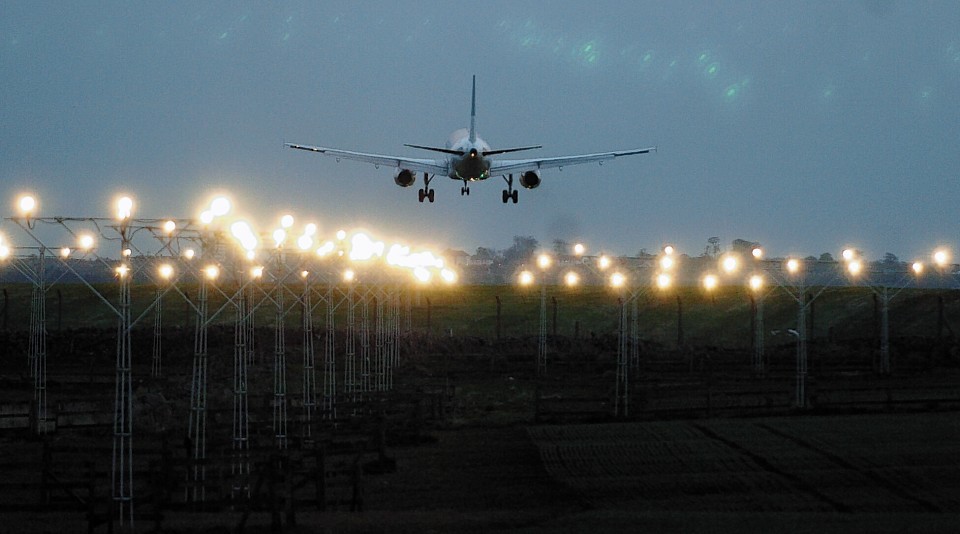Aberdeen International Airport (AIA) is now operating under a more exacting yardstick for how closely flights stick to their timetable.
The Aviation Authority (CAA) said yesterday it was more than doubling the number of airports it monitors for punctuality.
AIA and 13 others are being checked for on-time performance and average delay for the first time, bringing the total number of sites covered by CAA monitoring to 24.
It means the percentage of UK passenger flights checked for punctuality has risen to 90%, from 73% previously.
Coverage for individual air passenger journeys has increased to 97%, from 83%, as a result of the increased monitoring.
AIA publishes its own punctuality statistics every year but these are for departing flights only.
Its last set of figures show 88.8% of aircraft departed within 15 minutes of their scheduled take-off time last year – a slight improvement on 2013, when the percentage was 87%.
The CAA – the UK aviation industry regulator – measures both arrivals and departures, giving a better reflection of how well airports and airlines are sticking to their overall schedules.
It has been gathering punctuality data since last October but it has also retrospectively collected statistics for the fourth quarter of 2013, giving a year-on-year comparison.
The CAA’s figures do not include helicopter flights or cargo and air taxi services, and cover only those flights which actually operated. Some airports and airlines prioritise delaying flights rather than canceling them outright.
According to the CAA, AIA’s punctuality rate for the final quarter of 2014 was unchanged from a year earlier at 80% of all departures and arrivals.
The average delay faced by passengers travelling to and from the Granite City in the latest period was 11 minutes, down from 10 minutes a year earlier.
An AIA spokeswoman said: “The airport consistently works with its partner airlines to ensure on-time departures for passengers.
“In certain circumstances, such as adverse weather, delays are sometimes unavoidable.”
As well as AIA, the CAA’s newly covered airports include, Belfast City, Belfast International, Bournemouth, Bristol, Cardiff, Doncaster Sheffield, Durham Tees Valley, East Midlands, Exeter, Jersey, Liverpool, Leeds Bradford and Southampton.
These join 10 other airports already monitored by the CAA – Edinburgh, Glasgow, Birmingham, Gatwick, Heathrow, London City, Luton, Manchester, Newcastle and Stansted.
The CAA said its increased punctuality monitoring was part of its drive to publish more information and help passengers make comparisons between air transport services.
Iain Osborne, director for regulatory policy at the regulator, said: “The CAA is here to look after passengers’ interests and we want to make sure people can make more informed decisions about which airport they would like to fly from.
“Our expanded coverage means even more air passengers can now see for themselves how well the country’s busiest airports are performing against flight punctuality.”
